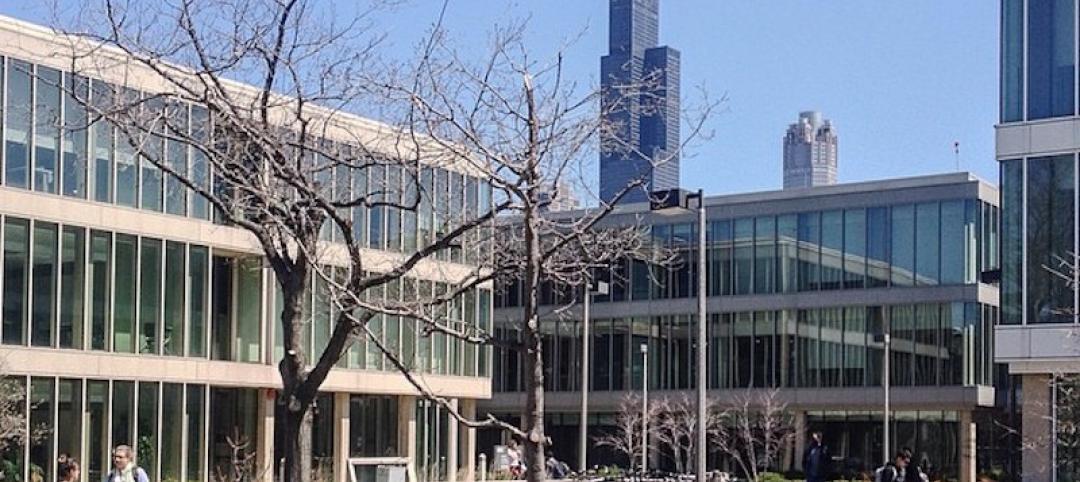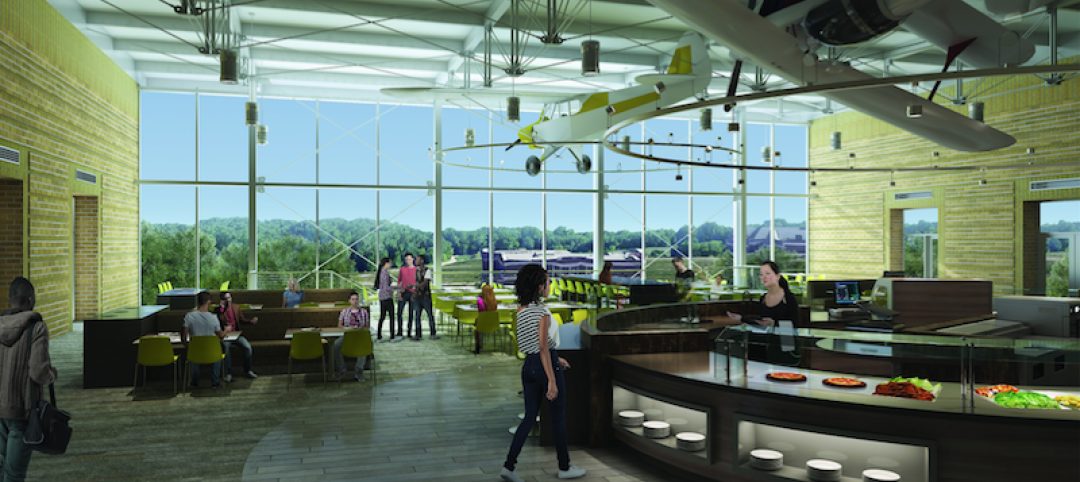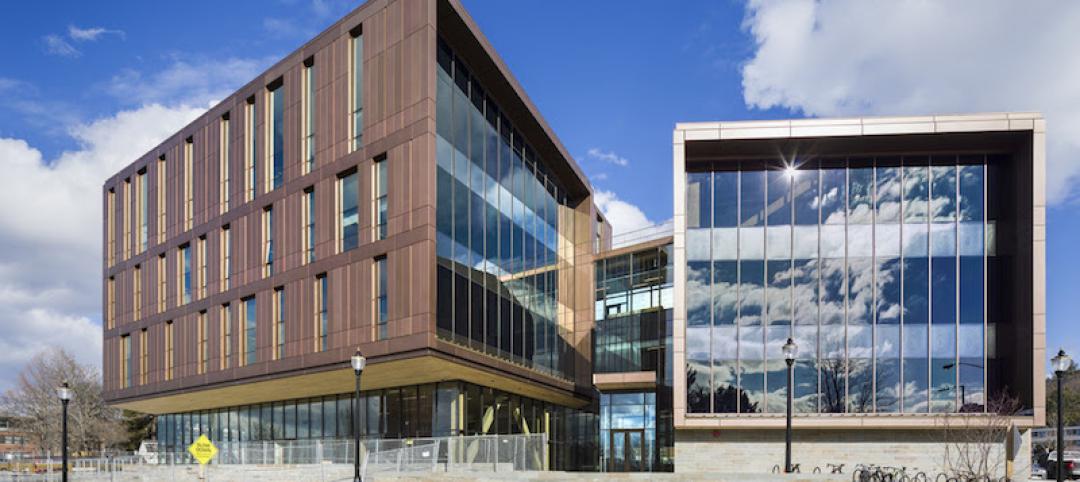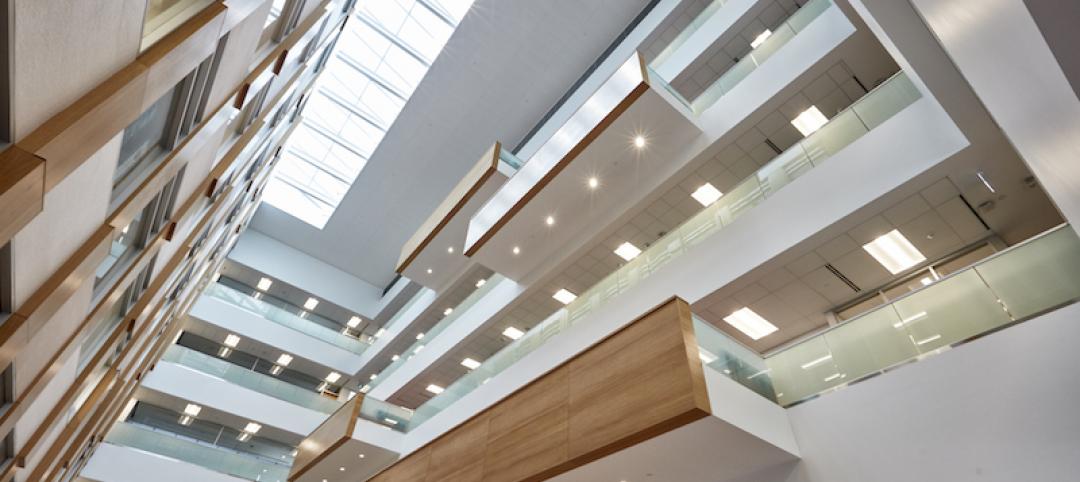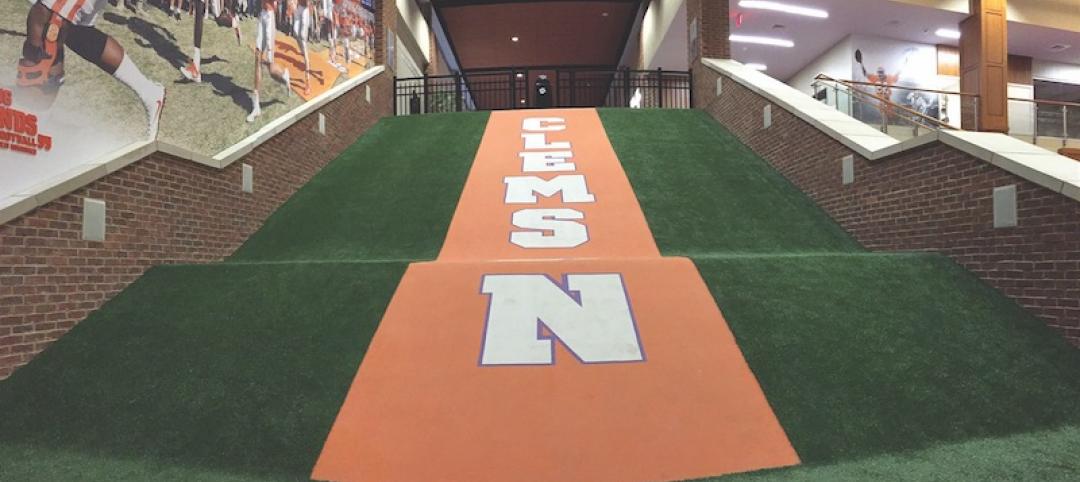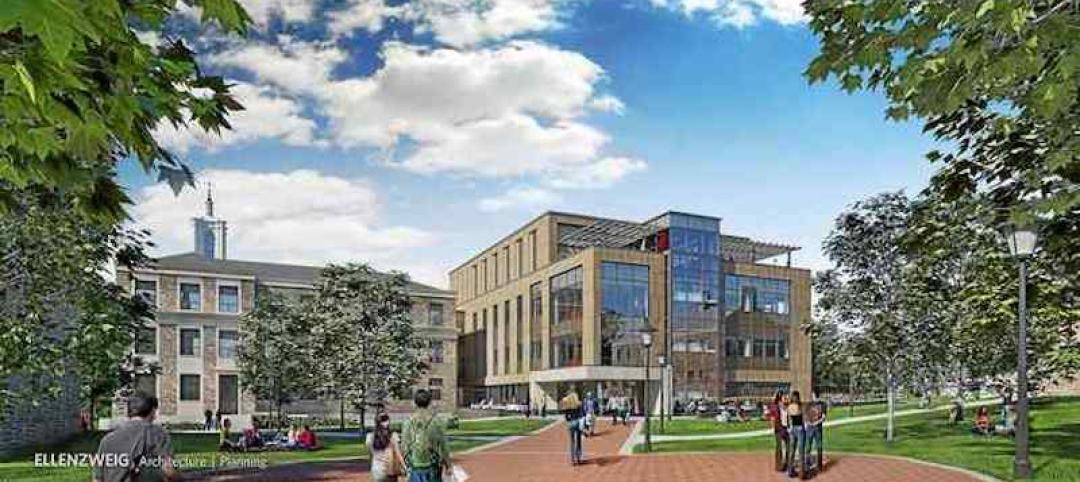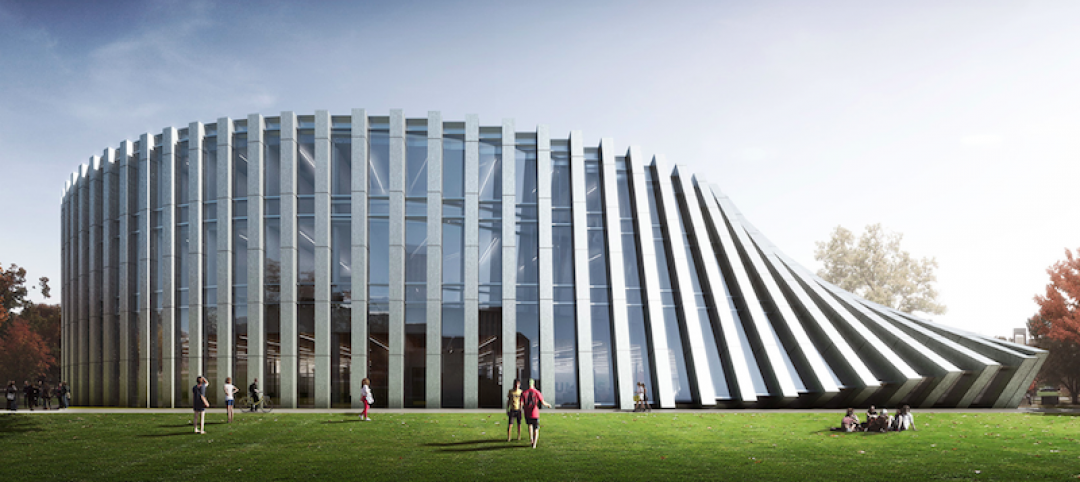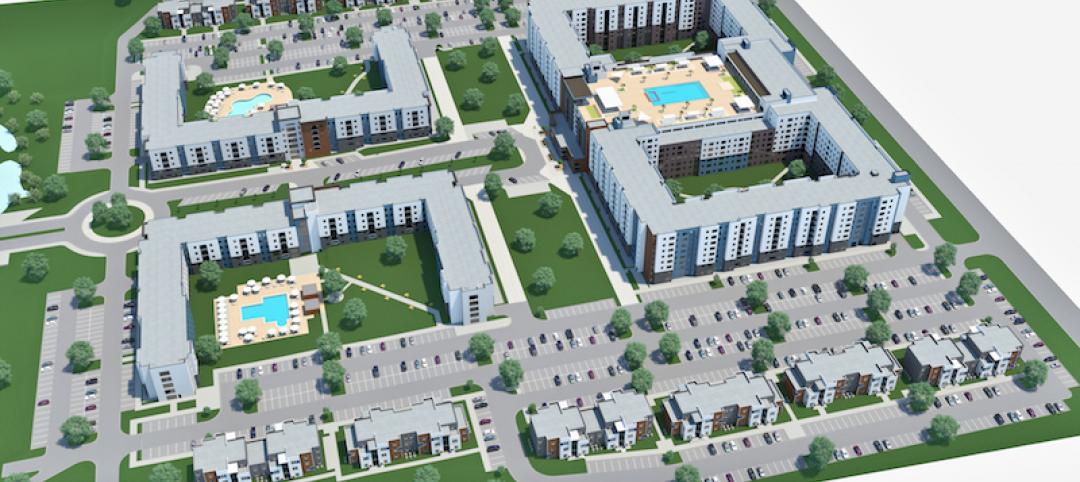On Monday, Columbia University held a dedication ceremony for its 17-acre Manhattanville campus in the West Harlem section of New York City. This $6.3 billion campus, which when completed will comprise 6.8 million sf of new academic space, is the university’s most ambitious expansion since it relocated to its current campus at Morningside Heights in Harlem 119 years ago.
The new campus, which was master planned by Skidmore Owings & Merrill and Renzo Piano Building Workshop, has been in the works since 2003, roughly around the time Lee C. Bollinger became the university’s president. “We knew that Columbia had to have new space to fulfill its mission as a great university,” said Bollinger during the dedication’s luncheon, held inside the 450,000-sf Jerome L. Greene Science Center, Manhattanville’s first building to open.
The Center, which should be fully occupied by next spring, is home to the Mortimer B. Zuckerman Mind Brain Behavior Institute. (The publisher and philanthropist Mort Zuckerman; Christina McInerney, president and CEO of the Jerome L. Greene Foundation; three Nobel Prize laureates and two Pulitzer Prize winners were among the dignitaries in attendance.)
Over the next two years, the Manhattanville campus will open the 60,000-sf Lenfest Center for the Arts, which will feature the Miriam and Ira D. Wallach Art Gallery, a 150-seat screening room, and a 4,300-sf presentation space; and the 56,000-sf University Forum, with a 430-seat auditorium.
Eric Kandel, MD, co-director of the Zuckerman Mind Brain Institute (and a Nobel Laureate in 2002 for the category physiology or medicine), proclaimed this project “historically important” to the university’s stature as well as for accentuating the symbiosis on campus between “bioscience and the arts.”
By 2021, the Ronald O. Perlman Center for Business Innovation and the Henry Kravis Building—492,000 sf across two buildings designed by Diller Scofidio + Renfro in collaboration with FXFowle Architects—will be the new home for the Columbia Business School.
Architect Renzo Piano describes the Jerome L. Greene Science Center in relation to its surrounding environment, which includes New York City's West Side Highway and the Hudson River. Image: BD+C
Architect Renzo Piano spoke at the dedication, at which he referred to the Jerome L. Greene Science Center as both a “palace” and a “factory that explores the secrets of the mind.” Piano also talked about the “urban layer” that will connect the campus to the community via reversed ground-floor setbacks, widened sidewalks, the absence of walls or gates (which is in marked contrast to the fortress-like Morningside Heights campus), height limitations (the Center is nine stories above ground), and a custom-glazed curtainwall.
His firm designed the Center to be as transparent as possible. The facility’s first floor, in fact, is open to the public. And its offices, labs, and other workspaces are organized on an open floor plan, divided into quadrants along North-South/East-West axes that expose workers and visitors to ample daylight.
Jerome L. Greene Science Center is across the street from an elevated subway line whose noise level measures 88 decibels. To mitigate that noise, the building was designed with a double-pane glass wall system whose 16-inch-wide air cavity in between exhausts air from the HVAC system and lets occupants open windows and glass doors from the inside. Open-air staircases connect the floors and encourage interaction between departments.
A 75,000-sf central energy plant, beneath the Greene and Lenfest buildings, will deliver electricity, chilled water, and high-pressure steam to nearly all of the buildings on campus.
The exterior bracing is visible to call attention to Greene’s “industrial” affinity with surrounding buildings in the neighborhood. That connection is reinforced by Columbia’s adaptive reuse of existing buildings on Manhattanville’s campus—specifically a one-time Studebaker auto-manufacturing plant and milk processing plant—that now serve, respectively, as university administration offices and Columbia’s center for the study of jazz and computer-generated music.
Manhattanville was the original name of this neighborhood, and Columbia and its AEC partners are at great pains to position this campus expansion as integral to a community that in the past has been wary about the university’s growth intentions. Bollinger, in his comments, went so far as to state that the new campus “is the best thing that could happen to upper Manhattan.”
Outdoor plazas within the campus will be accessible to the general public. The Jerome L. Greene Science Center will include a 1,920-sf Wellness Center that conducts free programs to raise awareness about stroke and related risk factors, and trains local residents to become community health workers. The Wellness Center will also be home to Mental Health First Aid, a program dedicated to improving the quality of mental health services in Upper Manhattan.
A 1,500-sf Education Lab within the Center will provide programs about brain science for the community and K-12 schools. Columbia has contracted with BioBus, an independent nonprofit, to run this program, and to bring learning into the community.
“This campus puts Columbia into the world,” observed Marilyn Jordan Taylor, a consulting partner with SOM (where she spent 33 years) and the former dean of the University of Pennsylvania’s School of Design.
Columbia|Manhattanville’s buildings are targeting LEED Platinum ND certification. Lendlease and McKissack Construction are the construction managers on the Greene and Lenfest buildings, Skanska and Velez Organization are the CMs on the University Forum building. And Turner will be the CM on the business school.
Related Stories
University Buildings | May 5, 2017
'Escape forward': How one public university plans to grow
How can public institutions expect to survive and thrive in Illinois' turbulent environment? The answer, for one school anyways, is to think and act like entrepreneurs.
University Buildings | Apr 28, 2017
Suburban Chicago college breaks ground on aviation-themed student center
The design of the center is meant to pay tribute to the university’s heritage in aviation and aeronautics.
University Buildings | Apr 26, 2017
UMass Amherst is home to America’s first CLT academic building
The building brings the architecture, landscape architecture, and building technology departments under one roof.
Sponsored | Ceilings | Apr 17, 2017
University of Toronto Scarborough Campus building meets aesthetic, performance and sustainability goals with Rockfon ceiling systems
The University of Toronto’s $52.5 million, 126,788-square-foot Environmental Science & Chemistry Building is the newest addition to the Scarborough campus in Toronto, Ontario, Canada.
Products and Materials | Mar 28, 2017
Mondopads highlight Portland State University’s new Decision Theater
A total of seven InFocus Mondopads were used in the room to accommodate large group work and individual study.
University Buildings | Mar 14, 2017
Fresh off NCAA national title, Clemson opens plush football operations complex
The 142,500-sf facility, which opened just three weeks after Clemson’s national championship win over the University of Alabama, adjoins the indoor practice facility and outdoor practice fields, consolidating football operations into one complex.
University Buildings | Mar 8, 2017
Massive mixed-use residential village on USC’s Los Angeles campus on schedule to open this fall
Prefabrication of the six buildings’ walls reduced construction time by a year.
School Construction | Feb 26, 2017
A new survey finds education construction activity going strong this year
Surveys of school districts and colleges, though, raise questions about financing for future projects.
University Buildings | Jan 10, 2017
UMass Amherst’s Isenberg School of Business to receive modern, twisted addition from BIG
The 70,000-sf building was developed in collaboration with Boston-based Goody Clancy.
University Buildings | Jan 9, 2017
Massive student housing project in Texas will be ready this Fall
Developers hope the early opening of some units sets the tone for the community and future rentals.



